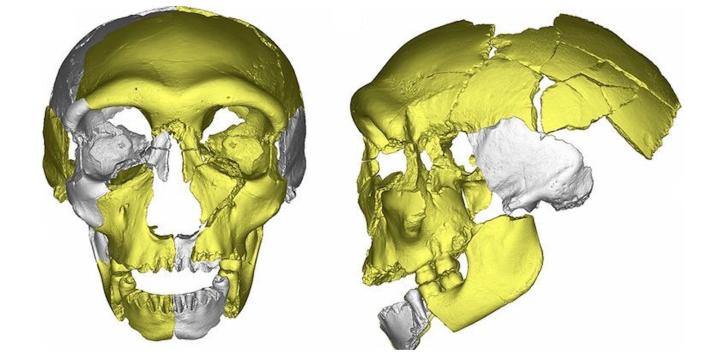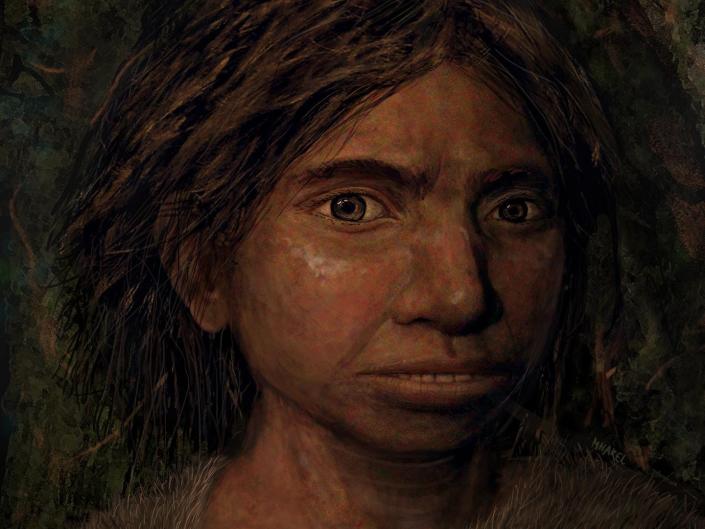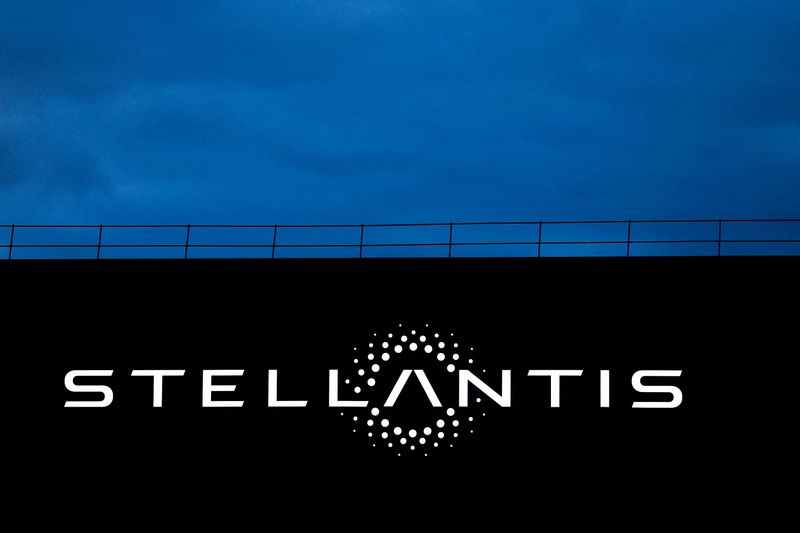
-
The ancient skull found in China is something scientists have never seen before.
-
The shape of the adolescent’s head does not fit any of the early human relatives seen so far.
-
If it were an undiscovered human ancestor, it could rewrite the story of human evolution.
The ancient skull baffles scientists because it looks so different from any known human ancestor.
Mystery of 300,000-year-old skull of 12-13-year-old boy revealed for the first time Hualongdong in East China in 2019, next to the shinbone.
Researchers believe the individual, known only as HDL 6, is a mix between modern humans and an unknown hominin that existed in China at the time, Science Alert reported Monday.
The skull has similar facial features to early modern humans, which scientists believe began branching away from another human ancestor known as Homo erectus among humans. 750,000 to 550,000 years ago.
But its limbs, hood, and chin “appear to reflect more primitive features,” write Xiujie Wu, a paleontologist from the Chinese Academy of Sciences and co-authors of the paper. bone analysis Posted July 31st.
these features Closer to the Denisovan facial structurea now-extinct branch of East Asian hominins that separated from Neanderthals about 400,000 years ago.

The scientists said in a recent analysis that this strange skull shape “was never recorded in the hominin fossil collections of the late Middle Pleistocene in East Asia.”
The discovery could rewrite what we know about human ancestry in the region. It is suggested that Denisovans, Homo erectus, and this new lineage that is “relatively close” to us may have coexisted in East Asia, Science Alert reports.
Human history is messier than we thought
This is not the first time Human remains have upset the elegant course of evolution which is believed to have given rise to humans.
Many of us have learned that Homo sapiens emerged from Homo erectus in Sub-Saharan Africa about 200 thousand years ago.
But the reality appears to be much messier. Fossils of often ancient Homo sapiens She bears a mixture of ancient facial structures And recent features so that the timeline can be a bit fuzzier than we think it’s in textbooks.
This is the case, for example, of remains found in Morocco in 2017 dated around 300,000 years ago with Homo sapiens-like featuresindicating that humans may have appeared much earlier than previously thought.
results Ancient human remains in Israel and Greece Over the past few years dating back to around 200,000 years ago also suggests that human ancestors may have left Africa much earlier than previously thought.

There is also paleontological and genetic evidence that points to this Ancient humans interbred with their cousins Neanderthals and Denisovans, which further complicates bloodlines.
If proven correct, the East Asian findings could add another branch of the ‘presapiens specimen’, bringing further insight into the human tree of life.
Read the original article at Business interested



